Among the plants of the iris genus, rabbit-ear iris (杜若/kakitsubata), which has been cultivated since the earliest times, is featured in the oldest anthology of Japanese poetry (和歌/waka), “Manyoshu (万葉集)” (Collection of Ten Thousand Leaves), books from the 900s, and “the Ise Monogatari (伊勢物語)” (Poetry Stories of the Early Heian Period), and its charms have been and continue to be loved by people.
Because of its beauty, it is used as a seasonal word in haiku, as a family crest, and as a work of art. Especially in the Edo period (1603-1868), many horticultural varieties were produced. Korin Ogata (尾形光琳) painted “Kakitsubata-zu Byobu (燕子花図屏風)” and “Yatsuhashizu Byobu (八橋図屏風)”, in which rabbit-ear iris (杜若/kakitsubata) are depicted in impressive and dignified style, and these paintings are designated as national treasures.
Let me introduce you to the enchanting “rabbit-ear iris pattern (杜若文/kakitsubata-mon),” which has fascinated people since ancient times!
About Rabbit-ear Iris (杜若/kakitsubata) ?
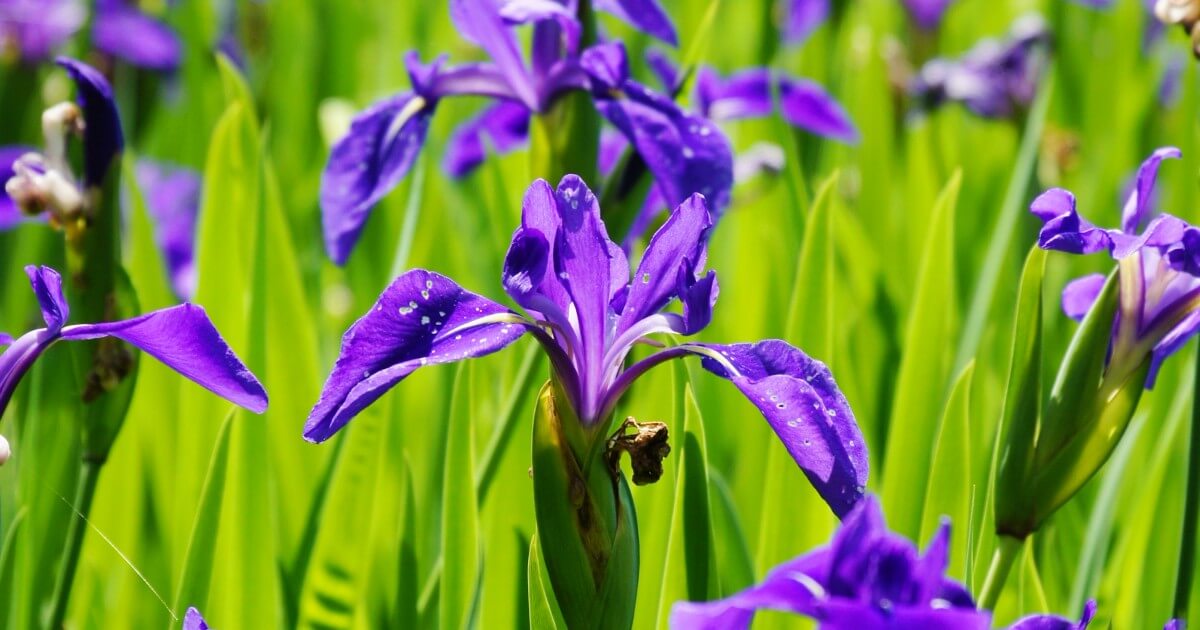 There seem to be various theories about the origin of the name “rabbit-ear iris” (杜若/kakitsubata).
There seem to be various theories about the origin of the name “rabbit-ear iris” (杜若/kakitsubata).
The first is called “katsukebana (書き付け花)” because of the ancient practice of dyeing cloth with flower juice, which is said to have been transformed into “kakitsubata (かきつばた)”.
The second, written in Chinese characters (漢字/kanji), is “kakitsuhata (垣つ端),” a reading without muddy marks. The reason for this seems to be that they often bloom around hedges.
It is said that “rabbit-ear iris” (杜若/kakitsubata) is also written in Chinese characters (漢字/kanji) as “oat flower (燕子花)” because its flower shape resembles that of a swallow.
It seems that “rabbit-ear iris (杜若/kakitsubata)” was also referred to as “Kakitsubata (垣津幡)” or “Kakotsubata (加古都幡多)” in “Manyoshu (万葉集)” (Collection of Ten Thousand Leaves).
By the way, the main Chinese characters (漢字/kanji) for 杜若 (kakitsubata) is originally a different Chinese name for yabu myoga (apparently pronounced ‘tojaku’), but because it was confused with Japanese iris, 杜若 (kakitsubata) seems to have taken root in Japan.
Sorry…I was just trying to explain the name. It was a complicated explanation about the name.
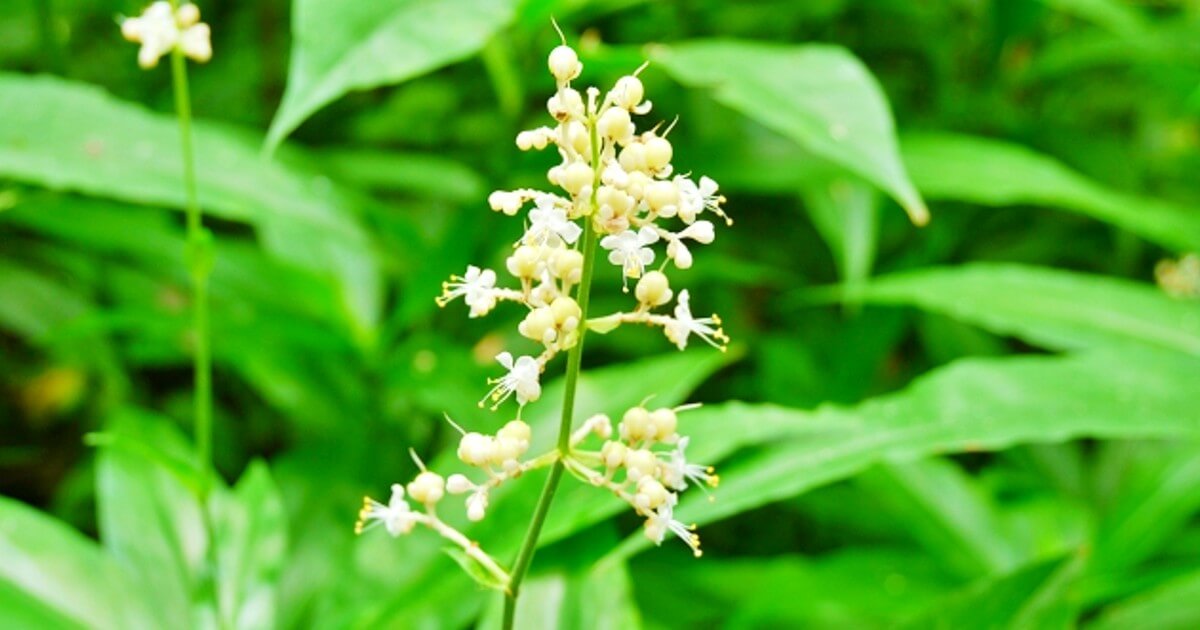 Yabu myoga hijacked in Japanese kanji notation
Yabu myoga hijacked in Japanese kanji notation
The rabbit-ear iris (杜若/kakitsubata) is a plant that has been in Japan since ancient times, and many varieties of this classic garden plant have been improved for ornamental use since the first half of the Edo period (1603-1868).
The rabbit-ear iris (杜若/kakitsubata) is a perennial herb of the iris family. It blooms from May to June in early summer, when summer is in full swing, growing 50 cm to 70 cm tall from shallow water and producing bright blue flowers with deep purplish tints. In case you are wondering, there is a white streak around the center of the flower.
Besides Japan, it is also distributed in China, the Korean Peninsula, and eastern Siberia. Its leaves are long and slender, and its veins are not very conspicuous.
Charms of Rabbit-ear Iris (杜若/kakitsubata)
Kakitsubata Of Idioms:Any iris or rabbit-ear iris (izure ayame ka kakitsubata/いずれアヤメかカキツバタ)
In Japan, the rabbit-ear iris (杜若/kakitsubata) is so beautiful that it catches the eye of artists throughout the ages and captivates people’s hearts. There is an idiom that says, “Any Ilis or Rabbit-ear Iris” (izure ayame ka kakitsubata/いずれアヤメかカキツバタ). This phrase means that both are so beautiful that it is hard to choose the superior.
In the middle of the Edo period (1603-1867), the iris was improved and the iris became popular, and the two plants were compared because of their similar flower shape, which probably led to the saying, “Any Ilis or Rabbit-ear Iris” (izure ayame ka kakitsubata/いずれアヤメかカキツバタ).
By the way, iris is written “菖蒲 、文目、綾目 (あやめ/ayame)” by the Chinese character (漢字/kanji), and japanese iris is written “菖蒲 (しょうぶ/syoubu)” by the Chinese character (漢字/kanji), and they are actually different flowers, although they seem to be the same.
On that basis, I would like to introduce the difference between iris, Japanese iris, and rabbit-ear iris (杜若/kakitsubata).
☑iris (菖蒲/ayame) 👉 reticulate
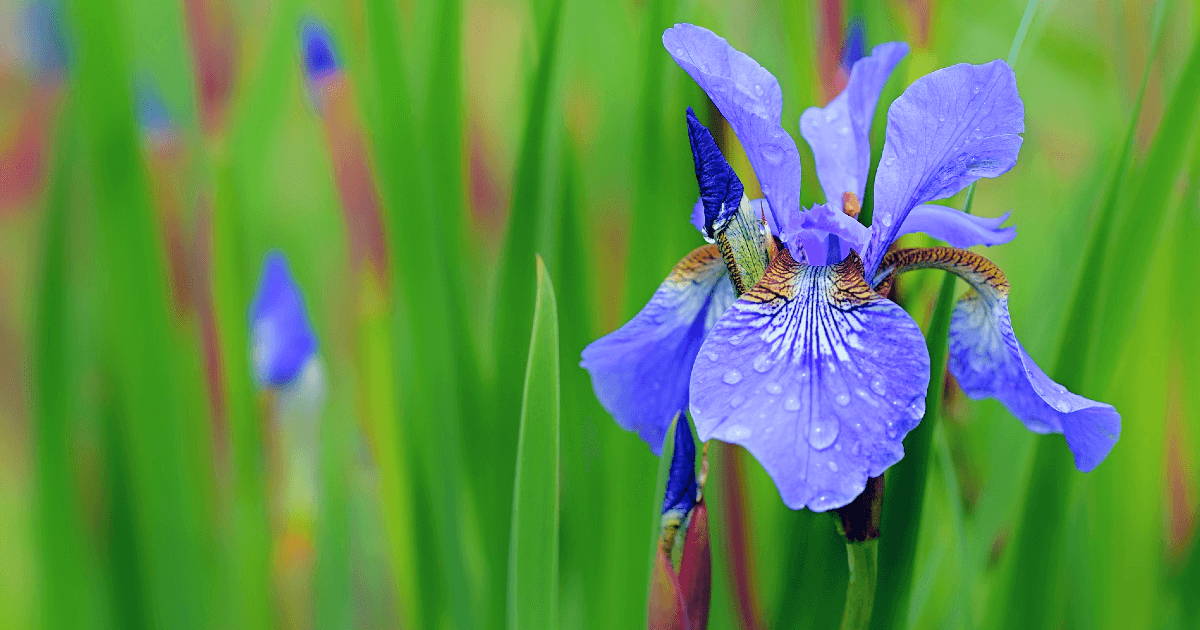
☑japenese iris (菖蒲/syoubu) 👉 yellow

☑rabbit-ear iris (杜若/kakitsubata) 👉 white streaks
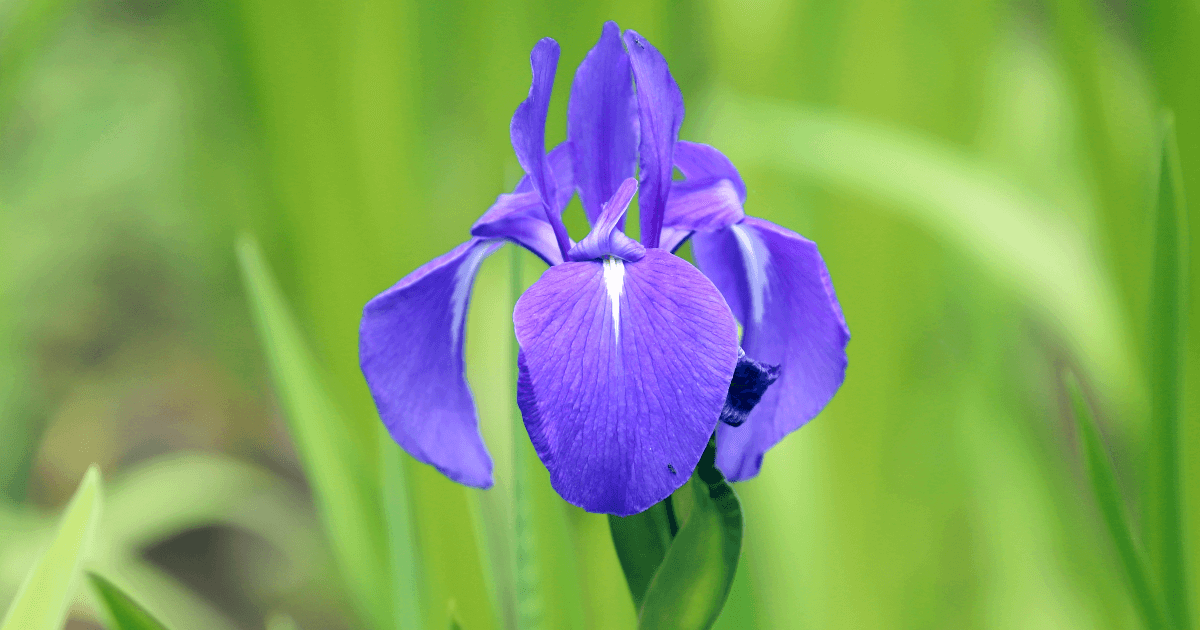 Difference #2: Habitat
Difference #2: Habitat☑iris (菖蒲/ayame) 👉 land
☑japenese iris (菖蒲/syoubu) 👉 in the water
☑rabbit-ear iris (杜若/kakitsubata) 👉 waterside
I’m also surprised!!
Rabbit-ear Iris (杜若/kakitsubata) & The Language Of Flowers
Good luck to you
The word “rabbit-ear iris (杜若/kakitsubata)” is derived from the word “kakitsubata (燕子花)” (swallow), which is a bird of good luck that brings happiness, and thus the word “good luck” was born.
Noble
The word “noble” is also found in the language of flowers of the rabbit-ear iris (杜若/kakitsubata). Its dark purple flowers and slender stems are well suited to the word “noble”. The rabbit-ear iris (杜若/kakitsubata) has been familiar to the Japanese since ancient times, appearing in the oldest collection of Japanese poetry (和歌/waka), “Manyoshu (万葉集)” (Collection of Ten Thousand Leaves). In the past, purple was a special color worn only by those of noble birth. This is said to be the reason why the word “noble” was given to the rabbit-ear iris (杜若/kakitsubata) as well.
Longing
The language of flowers of the rabbit-ear iris (杜若/kakitsubata) flower also includes “longing”. However, there are various theories as to the origin of this flower language.
One theory is that the rabbit-ear iris (杜若/kakitsubata) resembles a pretty woman standing by the water’s edge, pining for her one true love.
Another theory is that it is named after a poem composed by Uzaihara no Narihira (在原業平).
*Uzaihara no Narihira (在原業平) is Japanese poet of the early Heian period (794-1185).
In the poem, he wrote, “As my wife, whom I have known for many years, is in the capital, like the Chinese robe I have grown accustomed to wearing, I am deeply saddened by the wretchedness of the long journey I have made, leaving her behind.
It is said that the word “思慕” (meaning “longing” in Japanese) became the language of flowers of the rabbit-ear iris (杜若/kakitsubata) as a symbol of the feelings for the wife in the capital.
I will explain again later.
In English, the iris is a member of the iris family, which includes the rabbit-ear iris (杜若/kakitsubata), and is given the floral language of “message,” “hope,” and “trust”. Incidentally, yellow iris is named with the scary flower language of “revenge,” while the rabbit-ear iris (杜若/kakitsubata) does not seem to have such a thing.
Rabbit-ear Iris (杜若/kakitsubata) & Traditional Japanese Colors

Kakitsubata-iro (杜若色/rabbit-ear iris color)
“Kakitsubata-iro (杜若色/rabbit-ear iris color)” refers to a bright purplish blue color like that of the rabbit-ear iris (杜若/kakitsubata) flower.
The color scheme of the front and back of a garment, called “kasane-iro-me (襲の色目),” originated in the Heian period (794-1185) and was incorporated into court costumes such as juni-hitoe) (十二単) (12-layered overcoats), expressing the tones of the four seasons.
“Kakitsubata-iro (杜若色/rabbit-ear iris color)” is considered one of the colors of such attacks, with the front side being Futa-ai (二藍) and the back side being Moegi (萌葱). It is the perfect color to wear in the refreshing early summer.

紫草/Lithospermum erythrorhizon
The color purple, like the flower of the rabbit-ear iris (杜若/kakitsubata) tree, has been revered as a noble color since ancient times. In China and Japan, the roots of Lithospermum erythrorhizon (紫草/murasaki) are used to express this color.
Lithospermum erythrorhizon (紫草/murasaki) is designated as an endangered species. It produces very small, white, dainty flowers around the same time as the rabbit-ear iris (杜若/kakitsubata).
It seems that the roots of that flower growing in the soil contain a beautiful and noble purple pigment.
The dye is used to express the color “Kakitsubata-iro (杜若色/rabbit-ear iris color)”.
Incidentally, it was popularly known as “Edo purple (江戸紫/edo-murasaki)” in the Edo period (1603-1867).
Rabbit-ear Iris (杜若/kakitsubata) & Aichi prefecture (愛知県)
It is also designated as the prefectural flower of Aichi Prefecture and the city flower of Chita City and Kariya City, Aichi Prefecture.
Rabbit-ear Iris (杜若/kakitsubata) & Ariwara no Narihira (在原業平) & Ogata Korin (尾形光琳)
The rabbit-ear iris (杜若/kakitsubata) is used in Japanese poetry (和歌/waka) in Japan’s oldest waka anthology, “Manyoshu (万葉集)” (Collection of Ten Thousand Leaves), books from the 900s, and “the Ise Monogatari (伊勢物語)” (Poetry Stories of the Early Heian Period), and as a seasonal word in haiku and on family crests.
The most famous of these is the waka poem “rabbit-ear iris (杜若/kakitsubata)”.
It was composed by Ariwara no Narihira (在原業平), who traveled from the capital of Kyoto to Yatsuhashi in the province of Mikawa (Yatsuhashi, Chita City, Aichi Prefecture).
着つつなれにし / Kitsutsunarenishi
つましあれば / Tsumashiareba
はるばる来ぬる / Harubarukinuru
たび(旅)をしぞ思ふ / Tabiwosizoomohuby Ariwara no Narihira (在原業平)
[Collection]
*The Ise Monogatari (伊勢物語) Section 9 (第九段)
*Kokin Waka Shu (古今和歌集) Volume 9, Number 410 (巻第九 410)
The Japanese poetry (和歌/waka) here was composed in memory of his wife, who had left him in the capital, by adding the characters for “Ka/Ki/Tsu/Ha/Ta” to the beginning of each phrase when he saw the dignified blossoms of the rabbit-ear iris (杜若/kakitsubata) at Yatsuhashi, Chita City, Aichi Prefecture, a famous place of the rabbit-ear iris (杜若/kakitsubata).
This waka poem is famous for its use of the “orikku (折句)” technique, and is included in the Kokin Waka Shu (古今和歌集) (set of six classical Japanese poetry anthologies compiled between the Nara and Heian periods) and The Ise Monogatari (伊勢物語).
この投稿をInstagramで見る
The Ise Monogatari (伊勢物語), which contains this waka poem by Ariwara no Narihira (在原業平), a Japanese poetry (和歌/waka) about rabbit-ear iris (杜若/kakitsubata), has fascinated many people.
It is even used as a subject in Noh (能), one of Japan’s representative classical and traditional performing arts.
The Japanese poetry (和歌/waka) of Ariwara no Narihira (在原業平), the poet of the Tale of Ise, have also had an influence on the world of art and artifacts.
Edo period (1603-1868 CE) painters Ogata Korin (尾形光琳) and Sakai Hoitsu (酒井抱一) depicted scenes of Yatsuhashi Bridge with its many kakitsubata flowers in bloom in paintings such as “Kakitsubata Byobu (燕子花図屏風)” and “Yatsuhashi Byobu (八ッ橋図屏風),” respectively.
Especially famous are the six-panel gold-leaf folding screen paintings by Ogata Korin (尾形光琳), “Kakitsubata (燕子花)” and “Yatsuhashi (八つ橋)”, and the striking deep-blue paintings of rabbit-ear iris (杜若/kakitsubata), which have become the world’s highest class works, and are now national treasures.
In addition, traditional crafts such as makie (蒔絵) were also created using them as motifs.
The beauty of the waka poems written about rabbit-ear iris (杜若/kakitsubata) by Ariwara no Narihira (在原業平) must have captured the hearts of the Japanese people and attracted many people.
About Rabbit-ear Iris Pattern (杜若文/Kakitsubata Mon)
The rabbit-ear iris (杜若/kakitsubata), a member of the iris family, has been popular since the Heian period (794-1185) and has been used in paintings, poems, and crafts.
It is also used in Noh (能) costumes.
It is used as one of the flowers of the four seasons along with other flowers and plants, and is also seen in Bingata dyeing (紅型染) and landscape patterns.
The elegant and beautiful rabbit-ear iris (杜若/kakitsubata) was already used as a decorative pattern on clothing and palanquins during the dynastic period, and was especially favored by court nobles in the Nara and Heian periods.
However, it was not used as a family crest by the warrior class, and its use seems to have been limited to the court nobility.
Here are some typical rabbit-ear iris pattern (杜若文/kakitsubata mon).
Standing Rabbit-ear Iris (立ち杜若)
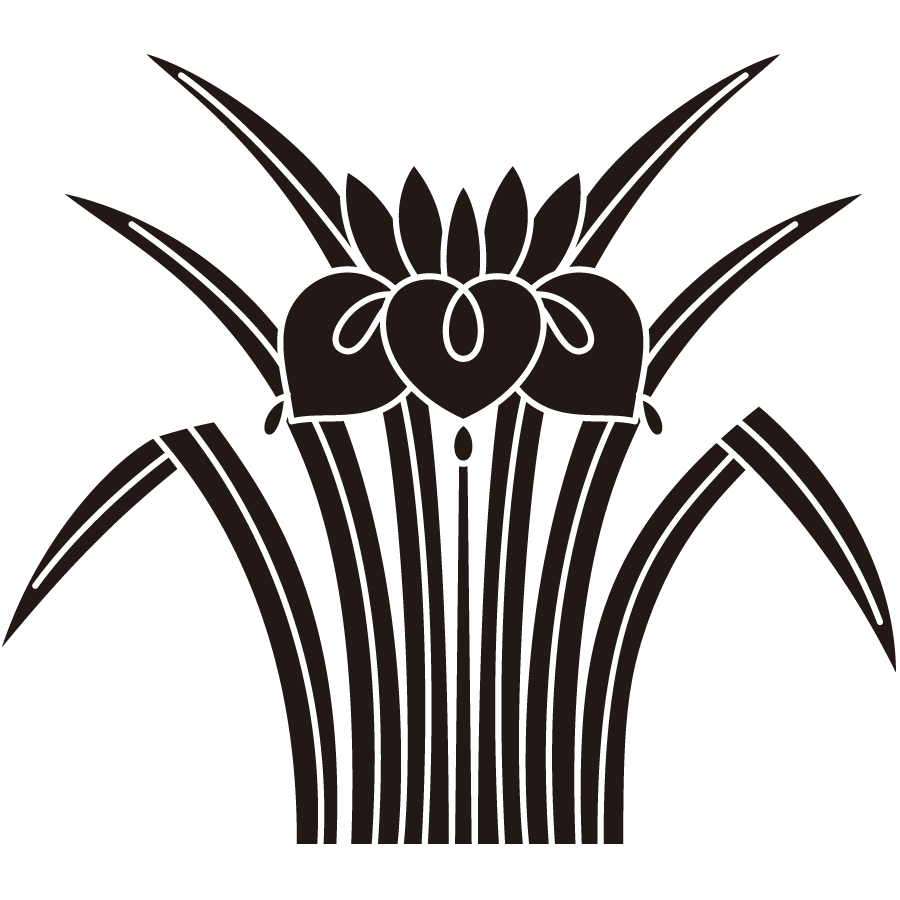 family crest:Standing Rabbit-ear Iris (立ち杜若)
family crest:Standing Rabbit-ear Iris (立ち杜若)
Photo:家紋のいろは
Standing rabbit-ear iris (杜若/kakitsubata) with long, thin leaves along with flowers.
Flower Of Rabbit-ear Iris (杜若の花)
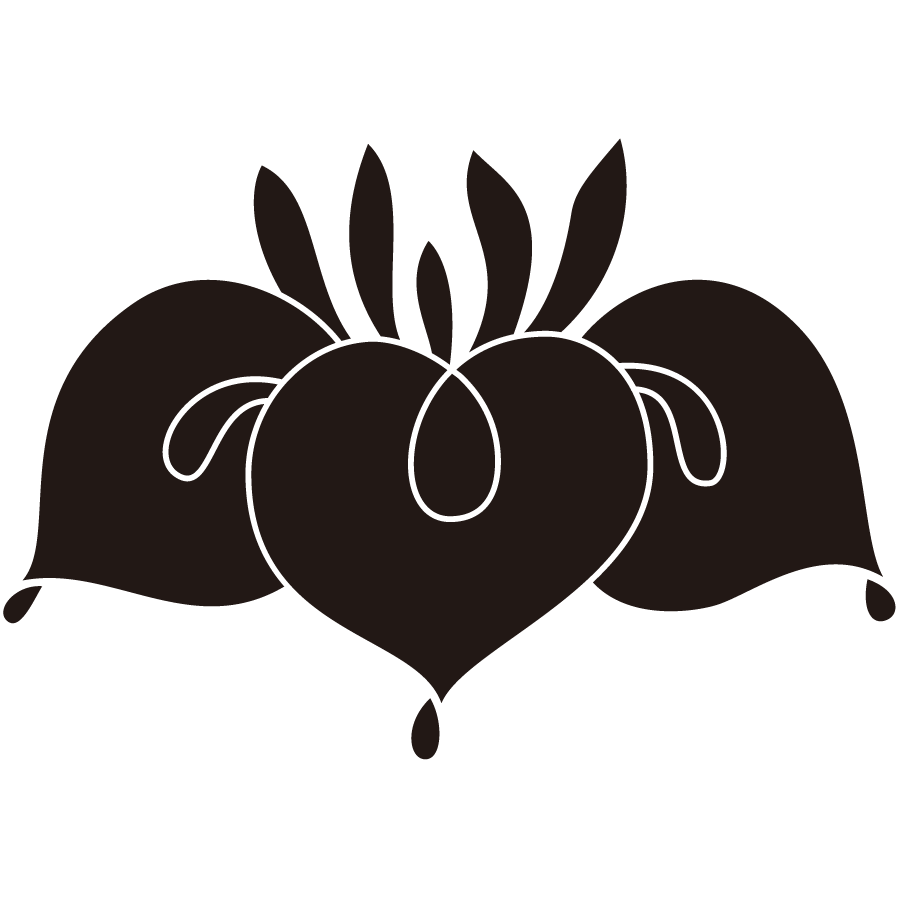 family crest:Flower Of Rabbit-ear Iris (杜若の花)
family crest:Flower Of Rabbit-ear Iris (杜若の花)
Photo:家紋のいろは
The beautiful flower of the rabbit-ear iris (杜若/kakitsubata) is represented by a single flower, the flower of rabbit-ear iris.
Rabbit-ear Iris facing the round (丸に向う杜若の花)

family crest:Rabbit-ear Iris facing the round (丸に向う杜若の花)
参考:家紋のいろは
The flowers and leaves of the rabbit-ear iris (杜若/kakitsubata) are arranged in a circle.
Circle Of Rabbit-ear Iris (杜若の丸)
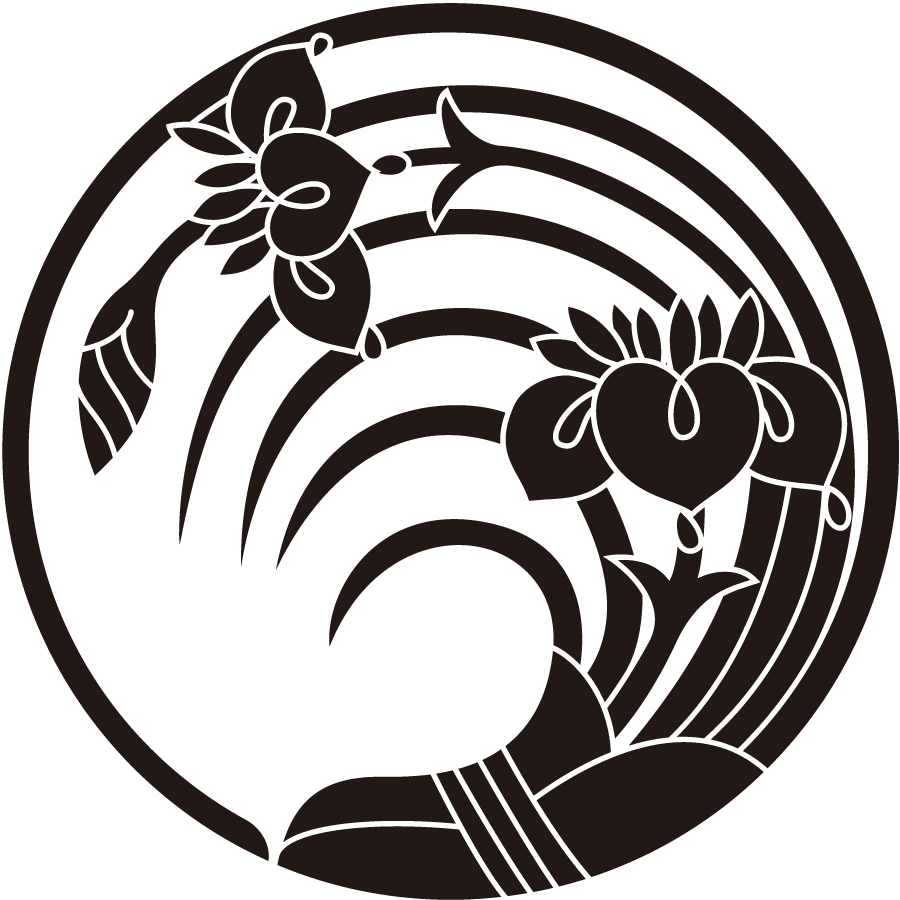 family crest:Circle Of Rabbit-ear Iris (杜若の丸)
family crest:Circle Of Rabbit-ear Iris (杜若の丸)
参考:家紋のいろは
The “Circle Of Rabbit-ear Iris (杜若の丸)” is a gorgeous round design of “rabbit-ear iris (杜若/kakitsubata)”.
Design using Rabbit-ear Iris Pattern (杜若文/Kakitsubata Mon)
この投稿をInstagramで見る
この投稿をInstagramで見る

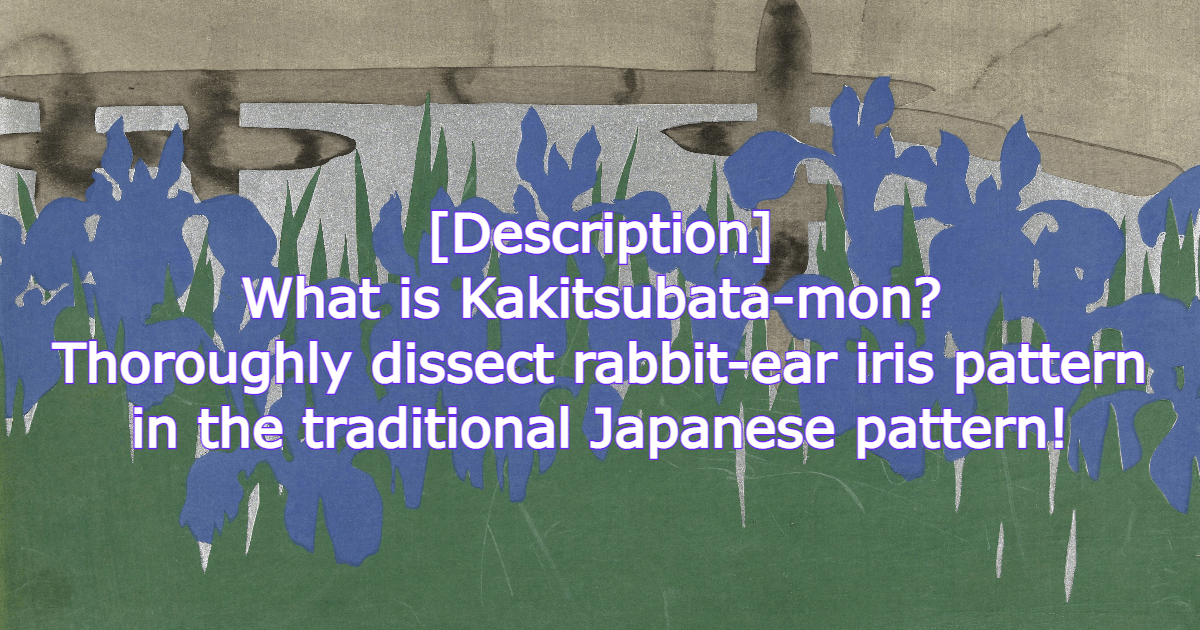



コメント